Why Sustainability Matters in Cruise Finland
Finland is known for its fresh air, lush forests, and four distinct seasons, with a rich, ever-changing landscape stretching all the way to Lapland. As tourism continues to grow, so does the responsibility to protect this pristine environment. Ensuring that Finland remains a sustainable travel destination requires proactive measures to combat global warming and pollution.
As a leader in sustainable development, Finland is committed to the global Sustainable Development Goals (SDGs) and has consistently ranked first in international sustainability comparisons.
To ensure tourism remains a force for good, Finland has developed clear priorities for sustainable travel.
Helping you navigate in the article:
- Why Sustainability Matters in Cruise Finland
- Finland’s Approach to Sustainable Tourism
- Local Initiatives
- Helsinki is Leading the Way in Sustainable Tourism
- Vaasa – A Carbon-Neutral City in the Making
- The Kotka and Hamina Regions Focus on Sustainable Tourism
- Mariehamn is Leading Åland’s Journey to Sustainability
- Turku Pioneers in Climate Action and Sustainable Tourism
- Oulu is Paving the Way for Sustainable Growth and Green Initiatives
- Jakobstad Advances Towards a Greener Future
- Collaborating Towards a more Sustainable Future in the Cruise Business
- Finland Leading the Way in Sustainable Tourism
Finland’s Approach to Sustainable Tourism
Finland’s Recovery and Resilience Plan supports the green transition, aiming for carbon neutrality by 2035 and stopping biodiversity loss by 2030. Visit Finland’s Sustainable Travel Finland (STF) program encourages tourism businesses and cities to adopt sustainable practices, with STF certification available for those meeting the criteria.
Sustainability in tourism takes many forms, from economic benefits for local businesses to minimizing environmental impact. Finland approaches this through three key pillars:
Economic Sustainability – Maximizing Local Benefits
- Encourage cruise lines to purchase more local services
- Improve port-to-city infrastructure for efficient transit
- Help businesses increase cruise guest revenue through education and internationalization
- Develop digital and physical initiatives to boost local shopping
- Enhance shopping options for crew members
Social Sustainability – Strengthening Local Engagement
- Share factual information about cruising and congestion
- Promote attractions outside city centers
- Extend the cruise season for better visitor distribution
- Organize open ship days and cooperative efforts during peak cruise days
- Involve local communities in cruise tourism
Environmental Sustainability – Reducing Impact
- Monitor cruise ship emissions and noise levels
- Encourage ports to invest in grey water reception facilities
- Communicate facts about emissions and sustainability efforts
- Promote shore power solutions and standardized connections
- Reward environmentally friendly vessels
- Support the use of electric vehicles and “green” shore excursions
Learn more:
- Visit Finland – Sustainable Travel Finland
- Visit Finland- State of Sustainable Tourism 2023 (downloadable from the site)
- Visit Finland – Guide to Inclusive Travel
Local Initiatives
Destinations in Finland are developing eco-friendly excursions that support local communities while minimizing the environmental impact. These initiatives ensure that tourism leaves a positive mark while preserving Finland’s natural and cultural heritage.
Helsinki is Leading the Way in Sustainable Tourism
A City Committed to Sustainability
Helsinki is on a mission to become the world’s most sustainable tourist destination. In March 2025, the city earned the prestigious Green Destinations GSTC certification, meeting the strictest sustainability criteria set by the Global Sustainable Tourism Council (GSTC). Helsinki is the first city with over half a million residents to achieve this recognition, fully complying with all required standards.
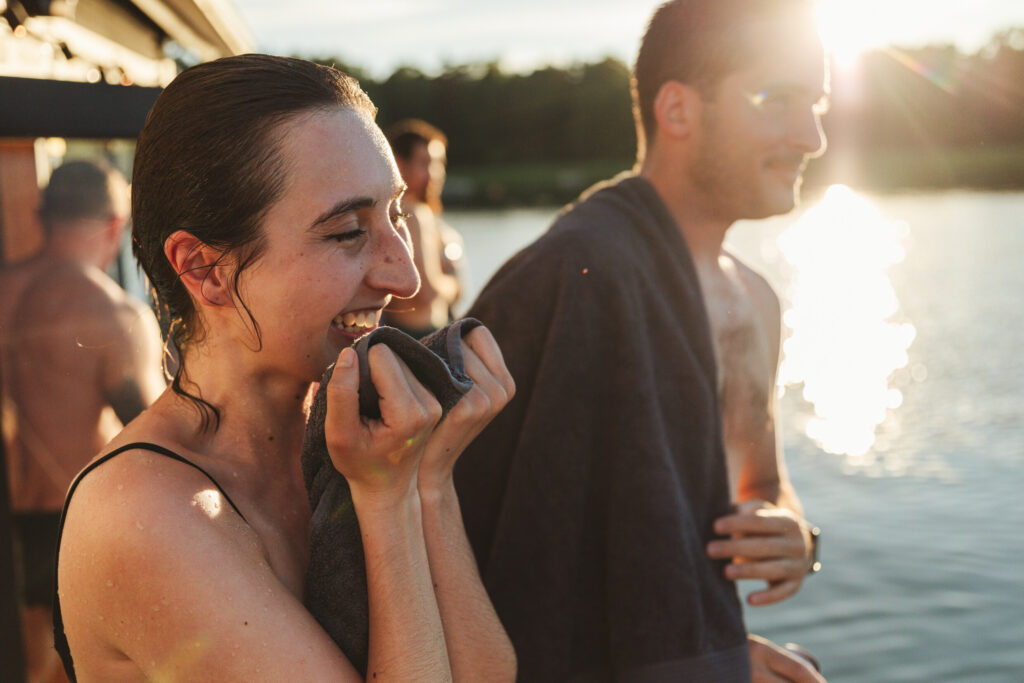
In autumn 2024, Helsinki claimed the top spot in the Global Destination Sustainability Index, which evaluates cities based on factors such as air quality, clean water, waste management, and green spaces. The city’s efficient public transport system, largely powered by renewable energy, and its compact, walkable layout contribute to a low-carbon, pedestrian-friendly environment with cleaner air and quieter streets.
Helsinki also boasts 23,000 acres of forests and parks per 100,000 residents, seamlessly blending urban life with nature. These green spaces not only provide recreational areas but also help regulate temperatures and manage stormwater. Yet, at the heart of Helsinki’s sustainability efforts are its residents – proud caretakers of their city, who come together every spring to clean up trash revealed as the snow melts, with supplies provided by the city.
Sustainable Tourism and Community Engagement
Helsinki actively integrates sustainability into its tourism and event policies. The City of Helsinki’s Roadmap for Circular and Sharing Economy promotes waste reduction and resource efficiency across tourism sectors.
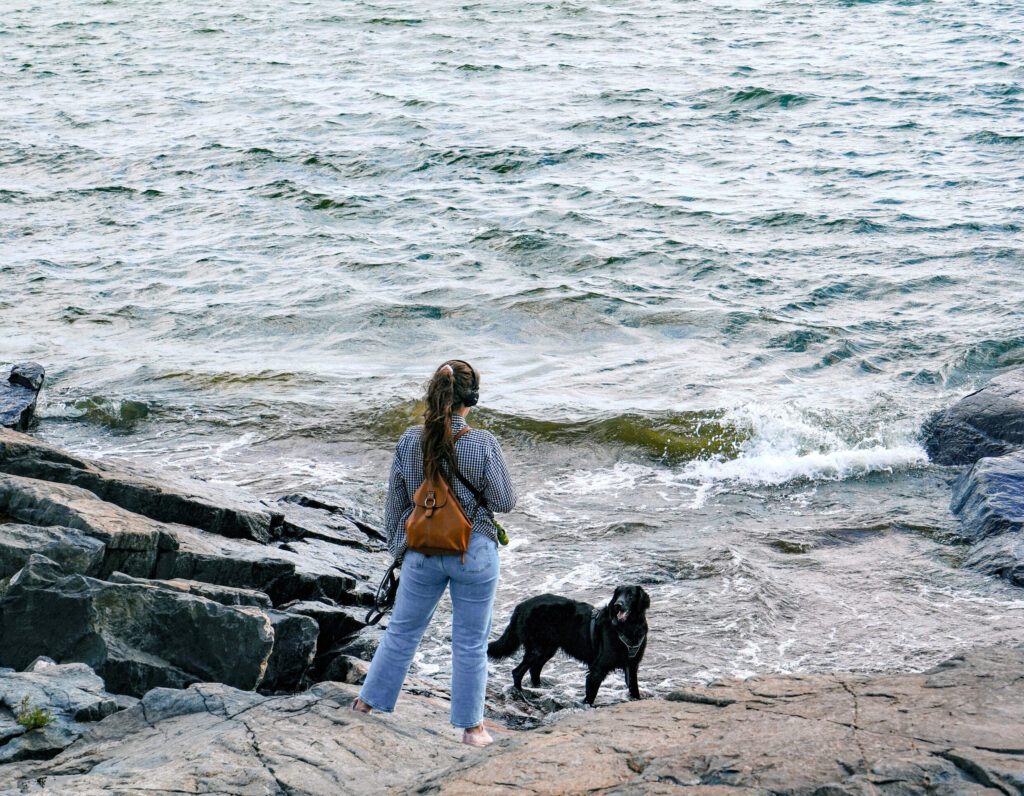
Sustainability is also a priority in the hospitality industry of Helsinki:
- The majority of hotel rooms in the city hold environmental certifications.
- Attractions, meeting venues, and tourism operators are focusing in sustainable practices.
- The city ensures tourism benefits local communities through public surveys and hearings.
Another unique aspect of Helsinki’s sustainability is its walkability—it is one of the few cruise ports where passengers can walk directly into the city center.
Port of Helsinki: A Carbon-Neutral Future
Together with its owner, City of Helsinki, the Port of Helsinki is committed to actively implementing the Carbon-neutral Helsinki Action plan. The port is not only reducing its own carbon footprint but also encouraging ships and operators to lower emissions. By 2035, the Port of Helsinki aims to be fully carbon-neutral.
Key Sustainability Targets and Actions
- A 25% reduction in vessel emissions by the year 2030
- Making alternative fuels available at Helsinki ports
- The continued development of an environmental programme targeted at ships
- A 60% reduction in emissions from heavy goods vehicles by 2030
- Minimising the use of transport vehicles at ports
- Introducing incentives to use low-emission vehicles
- A 60% reduction in emissions from work machines used in the harbour area by 2030
- Enabling the electrification of work machine infrastructure
- Promoting the use of biofuels
By early 2025, the Port of Helsinki had already minimized its own operational emissions, focusing on reducing energy consumption and sourcing power from carbon-neutral energy providers. Emission compensation is only considered as a last resort.
To enhance the visitor experience, the Port of Helsinki and the City of Helsinki have joined forces to create a stakeholder network that streamlines passenger transfers and improves guest services.
Read more about sustainable tourism in Helsinki:
Vaasa – A Carbon-Neutral City in the Making
The strategic goal of the City of Vaasa is to become carbon-neutral by the end of the 2020s. This means significantly reducing greenhouse gas emissions in the city area and compensating the remaining emissions.
To effectively monitor and reduce emissions, Vaasa has developed an Internet of Things (IoT) platform that provides real-time data on transportation, heating, and electricity consumption. This way the city can simulate the impact of various actions, such as adjusting building temperatures when needed, or promoting car-free days.
The City of Vaasa is also piloting circular economy projects, such as reusing bricks from demolished buildings in new construction projects. This initiative aims to reduce the carbon footprint associated with building materials, thus promoting sustainable construction practices.
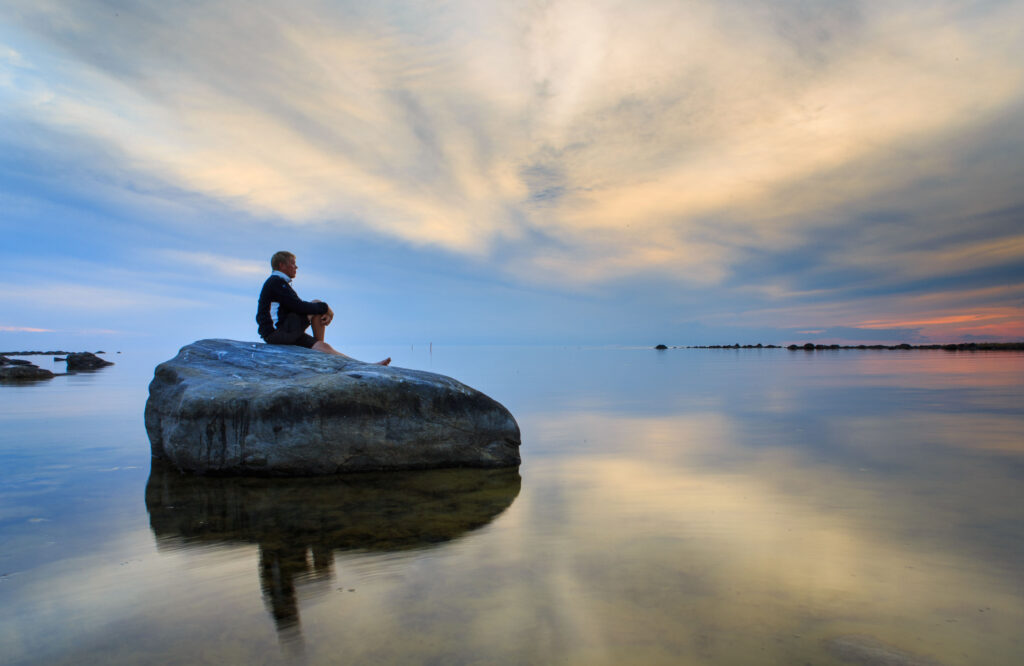
In September 2024, the Vaasa region was awarded the Sustainable Travel Finland (STF) label by Visit Finland, reflecting the region’s commitment to sustainable tourism practices. This achievement was the result of the collaboration between Visit Vaasa and more than half of its tourism businesses, all of which completed the dedicated STF program completed the dedicated STF program. Vaasa became the first mid-sized Finnish destination to earn this distinction.
Additionally, Visit Vaasa earned the EcoCompass Certificate in December 2022. EcoCompass, based on the international ISO 14001 standard, is an environmental management system that ensures responsible and sustainable operations.
The Port of Vaasa and power company Vattenfall are collaborating on an offshore wind project in the Gulf of Bothnia. A major industrial-scale wind farm is planned in Korsnäs to support Finland’s green transition. The port also has a waste management plan that ensures the environmentally responsible disposal of ship-generated waste. Additionally, it collaborates with Lassila & Tikanoja Oy to manage hazardous waste, oily wastewater, and sewage.
The Kotka and Hamina Regions Focus on Sustainable Tourism
Kotka and Hamina are part of the same region, Kymenlaakso, in South-Eastern Finland. Visit Kotka-Hamina, the official tourism organization for the Kotka-Hamina region, is a signatory of the Glasgow Declaration on Climate Action in Tourism, and is committed to reducing greenhouse gas emissions and fostering responsible tourism.
The region is also part of the Sustainable Travel Finland (STF) programme, aiming to have at least 51% of the businesses in the region STF-labeled in the near future. In 2024, six businesses in the area received the STF label, including Merikeskus Vellamo, Erämys Keisarinkosket, Vimpa Islands, Villa Jaakkola Oy, Seikkailuviikari Oy, and Santalahti Resort.
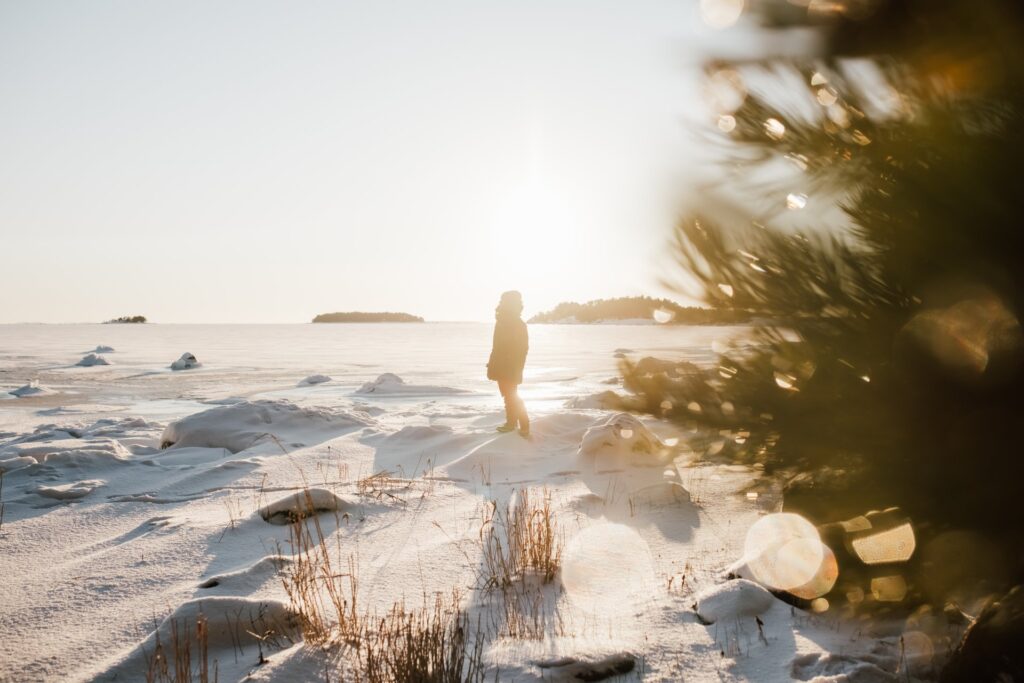
Photo: Krista Ylinen / Visit KotkaHamina
A Long-Term Commitment to Sustainability
Sustainability is the core of tourism development in the Kotka-Hamina region. Visit Kotka-Hamina collaborates with municipalities and travel businesses to promote responsible tourism, offering support and education on environmental, social, cultural, and economic sustainability. The goal is not only to protect the environment but also to preserve cultural heritage and enhance the region’s vitality. On tours, the focus is highly on nature and biodiversity and educating people on them. A popular tour destination is, for example, Valkmusa National Park with its natural open bogs, where you can immerse yourself in nature.
The City of Kotka is dedicated to sustainable growth, as outlined in its strategy extending until 2035. The strategy emphasizes the City’s commitment to fostering a clean transition, mitigating climate change, adapting to its effects, and preserving biodiversity.
Additionally, Kymenlaakso is part of the national Hinku network that works towards carbon-neutrality. This initiative unites municipalities, businesses, citizens, and experts to develop solutions for reducing greenhouse gas emissions. The Kymenlaakso region has committed to cutting its CO2 emissions by 80% by 2030.
Green Spaces and Sustainable Transport
Kotka is well known for its beautiful parks, of which several have been granted the internationally renowned Green Flag Award for their high quality and commitment to accessiblity, environmental management, and visitor engagement. Some examples of the beautiful green spaces are Sapokka Water Garden, Katariina Seaside Park, and Karhula River Park.

Photo: Sara Vanninen / Visit KotkaHamina
Sustainable transport is also a priority in Kotka. The city offers city bikes for rent throughout the spring and summer, and now more than 80% of the public transport of the city runs on electricity. Additionally, the Kantasatama cruise berth is within a walking distance of the city center, eliminating the need for shuttle buses.
Enhancing the Cruise Guest Experience
For cruise guests visiting Kotka and Hamina, a new digital solution is on its way: the Reveel app, which will be piloted in 2025. This app provides key information about the cities in 28 languages, helping visitors navigate their visit more easily. The app also gives a possibility to give feedback about their visit.
To further improve the visitor experience, Kotka has strengthened its collaboration between the port and the city by:
- Organizing annual infrastructure meetings with key stakeholders to ensure seamless transfers between the port and the city.
- Prioritizing local suppliers with sustainability certifications when recommending businesses to cruise lines, encouraging more sustainable practices.
- Yearly meetings between city authorities, tour operators, and local businesses to help align cruise tourism strategies.
Also, the cities are filled with ”cruise lover shops” – local businesses with special discounts for cruise guests, helping boost local business.
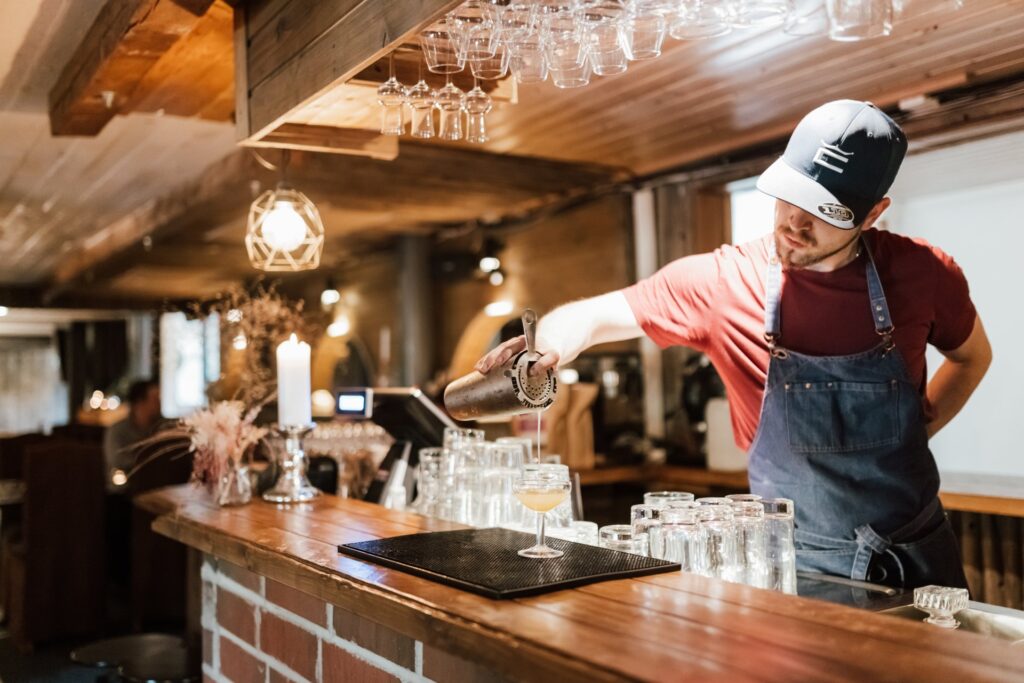
Sustainability at the Port of HaminaKotka
The Port of HaminaKotka Ltd operates under an internationally certified environmental management system (ISO 14001:2015), and continuously monitors and improves its sustainability efforts. Key initiatives include:
- Ship Waste Action Initiative – a pioneering program where ships are encouraged to leave wastewater ashore, and co-operation is used to accelerate a circular economy approach, where biogas for use as a fuel in heavy goods transport is produced from the ships’ sewage.
- Recycled materials, such as crushed concrete, in new port structures.
- Energy-efficient LED lighting upgrades.
Additionally, Port of HaminaKotka offers cruise lines a discount on vessel charges on environmental grounds, with the aim to encourage shipping companies to adopt more sustainable practices.
As sustainable fueling options are becoming increasingly important in the maritime industry, Port of HaminaKotka is keeping up with the developments. At selected quay areas, ships have the opportunity to bunker liquified natural gas (LNG), one of the leading alternative fuels for reducing emissions at sea. Additionally, there is an LNG terminal in Hamina located in the port area.
Further reading:
Mariehamn is Leading Åland’s Journey to Sustainability
Åland, an autonomous and demilitarized region of Finland, lies in the heart of the Finnish archipelago. A great part of all domestic fruits and vegetables consumed on mainland Finland are produced in Åland, with approximately 9% of its land dedicated to farming. This deep connection to nature makes environmental preservation a priority – not just for the capital, Mariehamn, but for Åland as a whole.
Åland is committed to becoming fully sustainable by 2051, with strategic milestones set for 2030. More than 20 tourism establishments in Åland have already earned the Green Key certification, an international standard for environmental responsibility in the tourism industry. Additionally, several businesses have been awarded the Nordic Swan Ecolabel, a prestigious recognition of sustainability efforts in the region.
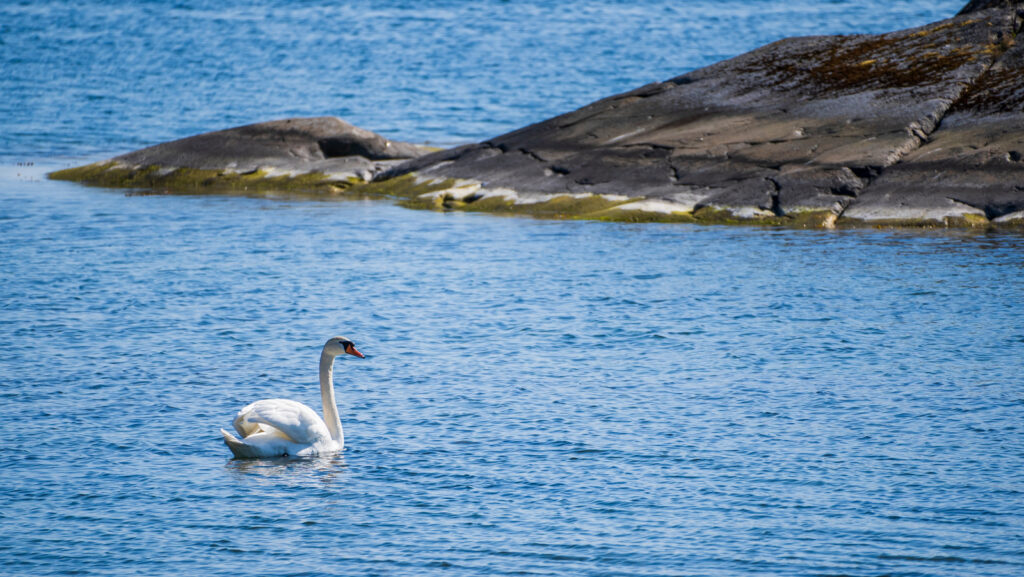
In 2022, the City of Mariehamn was awarded with the Nordic Council Environment Prize for its Nabben wetland initiative. This multifunctional wetland, located near the city, enhances water quality in the Baltic Sea, supports biodiversity, and serves as a recreational space for residents.
Mariehamn was also the first Finnish municipality to receive ISO 14001 certification, an international standard for environmental management, demonstrating its commitment to reducing environmental impact.
The Port of Mariehamn is a pilot location in the Sustainable Flow Project, which aims to lower CO2 emissions in and around ports by developing digital tools, implementing energy-saving measures, and promoting renewable energy sources.
Vision for the Future
Åland, and especially the people of Åland, embrace the philosophy ”Everyone Can Flourish on the Islands of Peace”, an approach recognized by UN-Habitat. This life philosophy promotes inclusive and sustainable urban development, ensuring no one, and no place, is left behind.
Turku Pioneers in Climate Action and Sustainable Tourism
The City of Turku
Turku is on a path towards carbon neutrality by 2029, with a vision to achieve a cooling effect on the climate by 2035. The city has already made remarkable progress, reducing its greenhouse gas emissions by over 60% in the past 25 years. This commitment to sustainability is reflected in ongoing investments in renewable energy, a sustainable urban structure, carbon sinks, low-carbon mobility, and the circular economy. The Climate Plan of the City of Turku serves as a roadmap for reaching these goals, ensuring continuous progress toward a greener future.
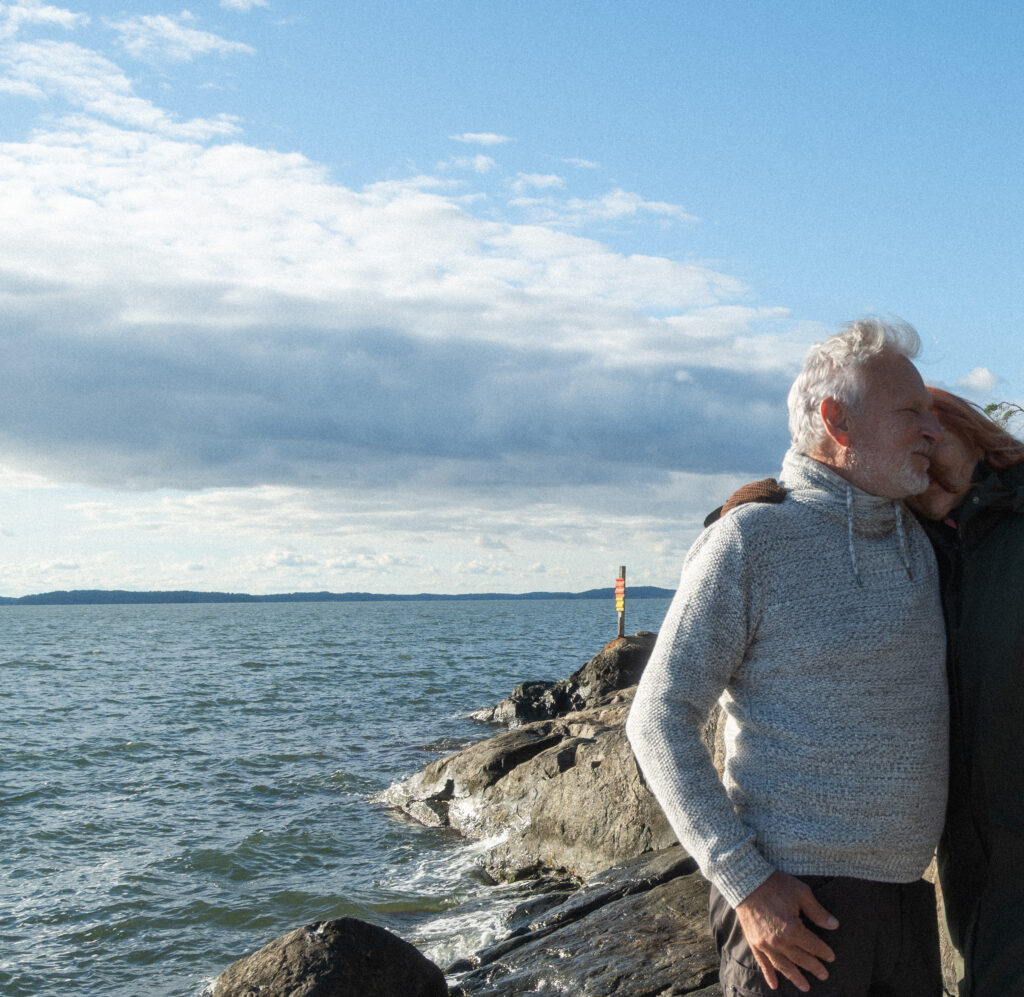
Sustainable tourism also plays a key role in the city’s vision. In December 2024, Visit Turku Archipelago, the official tourism organization of the Turku region, received the Sustainable Travel Finland (STF) label. Visit Turku Archipelago works closely with local businesses and the City of Turku to ensure the region’s tourism evolves in a sustainable direction. Visitors can enjoy eco-friendly activities such as walking tours, nature excursions, local home visits, and food-themed experiences, all designed to support responsible tourism.
Port of Turku
The Port of Turku is also taking actions in sustainability matters. In 2023, it signed a climate commitment, joining the ranks of the most environmentally conscious cities in Europe. One of its key initiatives is offering cruise lines an environmental discount on vessel charges, encouraging shipping companies to adopt greener practices – saving them hundreds of thousands of euros each year while reducing emissions.
The Port of Turku’s climate efforts focus on reducing CO2 emissions, with major steps already taken. The City’s district heating system now runs on renewable fuels, passenger vehicles at the port are electric, and other machinery operates on renewable diesel.
Additionally, the Port of Turku is modernizing its passenger harbor, with major updates to quay structures and traffic arrangements. The new terminal is expected to be operational by 2027, improving efficiency and safety while keeping sustainability in focus.
Examples of climate actions at the Port of Turku:
- Participating in regional air quality monitoring
- Using solar-powered buoy lights
- Reducing energy consumption through digitalization
- Directing vessel wastewater into the city’s wastewater system
- Converting food waste from vessels into biogas
The Port of Turku continues to significantly reduce its carbon footprint, working closely with the city to achieve carbon neutrality by 2029. A crucial step in this effort includes ending the sea disposal of dredging materials, a move that protects the fragile ecosystem of the Archipelago Sea.
Further reading:
Oulu is Paving the Way for Sustainable Growth and Green Initiatives
The nature of the Oulu region offers a diverse and stunning natural landscape, as the coastal region is characterized by the sea and land uplift, while in the east, the landscape is filled with river valleys. Oulu strives towards being a sustainably growing international center by focusing equally on social, environmental, and economical sustainability activities laid out in the Oulu City Strategy. For example, the city aims to be carbon-neutral by 2035.
The city of Oulu emphasizes sustainable city planning, environmentally friendly transportation, and carbon-neutral construction. Actions include integrating sustainable development principles into urban planning, promoting accessible and eco-friendly transportation options, and striving for carbon-neutral building practices.
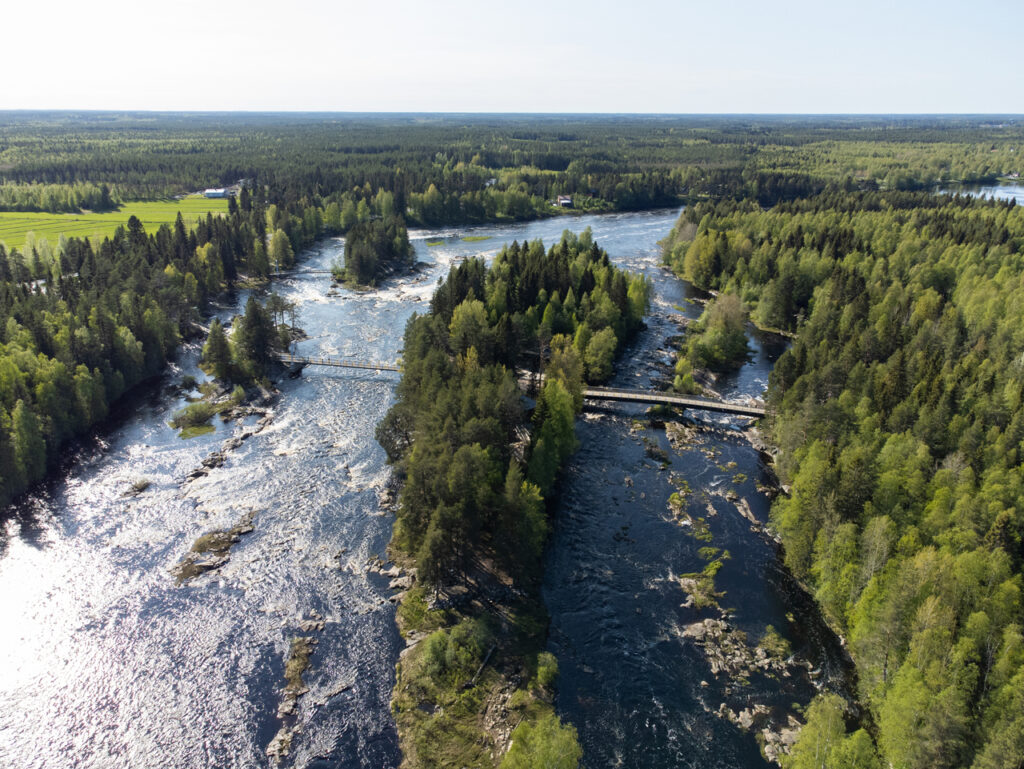
The city of Oulu encourages promoting environmental awareness among its residents, as they believe staying in nature promotes environmental awareness.
”Staying in nature promotes environmental awareness”
Since 2018, the Port of Oulu has been a member of the EcoPorts association, an environmental initiative of the European port sector. Aligning with international standards, such as ISO 14001, the membership involves continuous self-assessments to evaluate and improve environmental management practices.
The Port of Oulu actively participates in preserving bird habitats by, for example, using dredged sediment fields as nesting grounds as well as restricting access to them during nesting season to protect endangered bird species.
Jakobstad Advances Towards a Greener Future
The Jakobstad region is on its way to become a more sustainable destination, actively working under the Sustainable Travel Finland (STF) program. Local businesses such as Fäboda Kaffestuga, The Jakobstad-Pietarsaari Museum, and Nanoq Arctic Museum, have already joined the initiative. Also the local bus company gained its STF label in May 2023, making bus transport a greener choice for both residents and visitors.
The City of Jakobstad has also included sustainability in its strategy, and aims to achieve climate neutrality by 2025, focusing on, for example, future-oriented investments and creating a safe and thriving community.
Sustainability does not stop here, but is also reflected in the local restaurant scene. The restaurants, cafés, and breweries serve locally produced ingredients – from self-baked pastries and homemade ice cream to unique craft beers.
Collaborating Towards a more Sustainable Future in the Cruise Business
The cruise industry is increasingly focusing on sustainability, and collaboration plays a vital role in achieving its goals. Efforts to adopt eco-innovations and sustainable practices are gaining momentum, as highlighted in a recent report from the Cruise Lines International Association (CLIA). The industry is investing in alternative fuels, advanced wastewater treatment systems, and shoreside electricity capabilities to significantly reduce its environmental impact. Read the full report on CLIA’s sustainable efforts here.
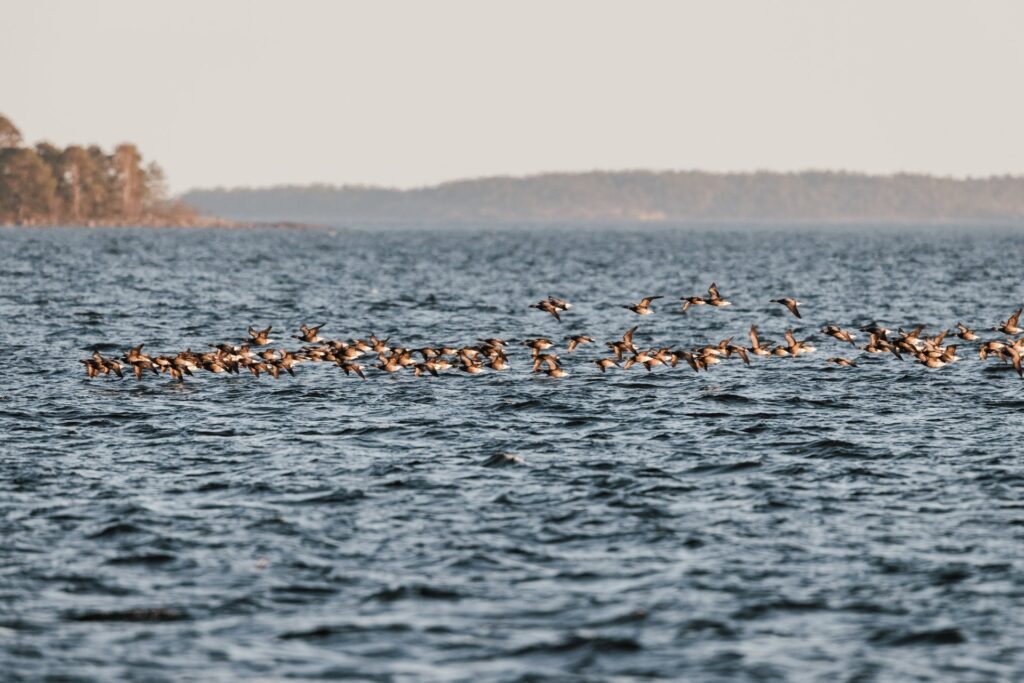
Cruise Baltic
Cruise Baltic, founded in 2004, is a B2B network consisting of 32 ports and destinations across the Baltic Sea region. Its mission is to promote the region to cruise lines and travel agents, offering easy access, excellent service, and high standards. The network ensures smooth integration between ports and cities, making the Baltic a prime destination for cruise travelers. Key ports from Cruise Finland include HaminaKotka, Helsinki, Mariehamn, and Turku.
Further reading:
CLIA’s Commitment to Sustainability
The Cruise Lines International Association (CLIA) has recently released reports outlining the cruise industry’s progress in adopting sustainable practices. These efforts include investments in alternative fuels, like liquefied natural gas (LNG), to reduce sulfur emissions and greenhouse gases. Additionally, the industry is committed to implementing advanced wastewater treatment systems, ensuring that no untreated sewage is discharged during normal operations. By 2028, over 72% of CLIA-member ships are expected to have the capability to connect to shoreside electricity, allowing ships to switch off their engines while docked. This could reduce emissions by up to 98%.
Environmental Protection in Finnish Ports
In Finland, cruise destinations and ports are also focusing on protecting local ecosystems. According to Finnish Nature Conservation legislation and international agreements, authorities must consider endangered species and their protection when planning operations. This is particularly important for bird species whose habitats may overlap with areas earmarked for industrial use. To mitigate this impact, new suitable habitats are being created. For example, dredged sediment fields, like those in the Oulu harbour area, are being transformed into excellent nesting grounds for endangered bird species.
Finland Leading the Way in Sustainable Tourism
Through collaborative efforts, Finnish ports and destinations, in partnership with organizations like CLIA and Cruise Baltic, are leading the way in sustainable tourism. By investing in green technologies, offering eco-friendly shore excursions, and implementing best practices, Cruise Finland’s destinations and ports ensure that tourism benefits local communities while preserving the environment for future generations.
Share this article on social media:
